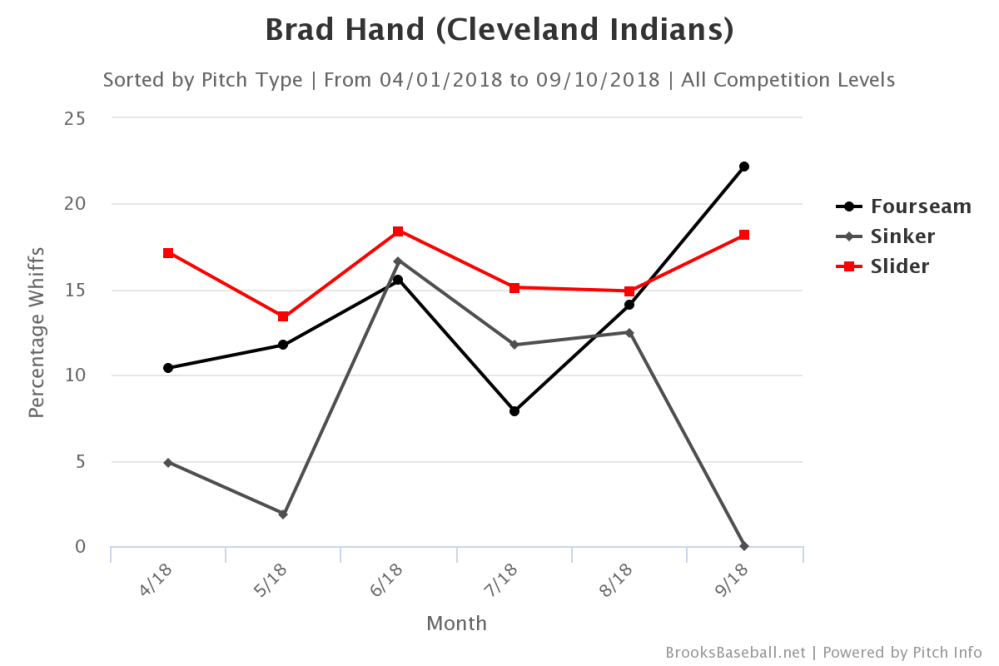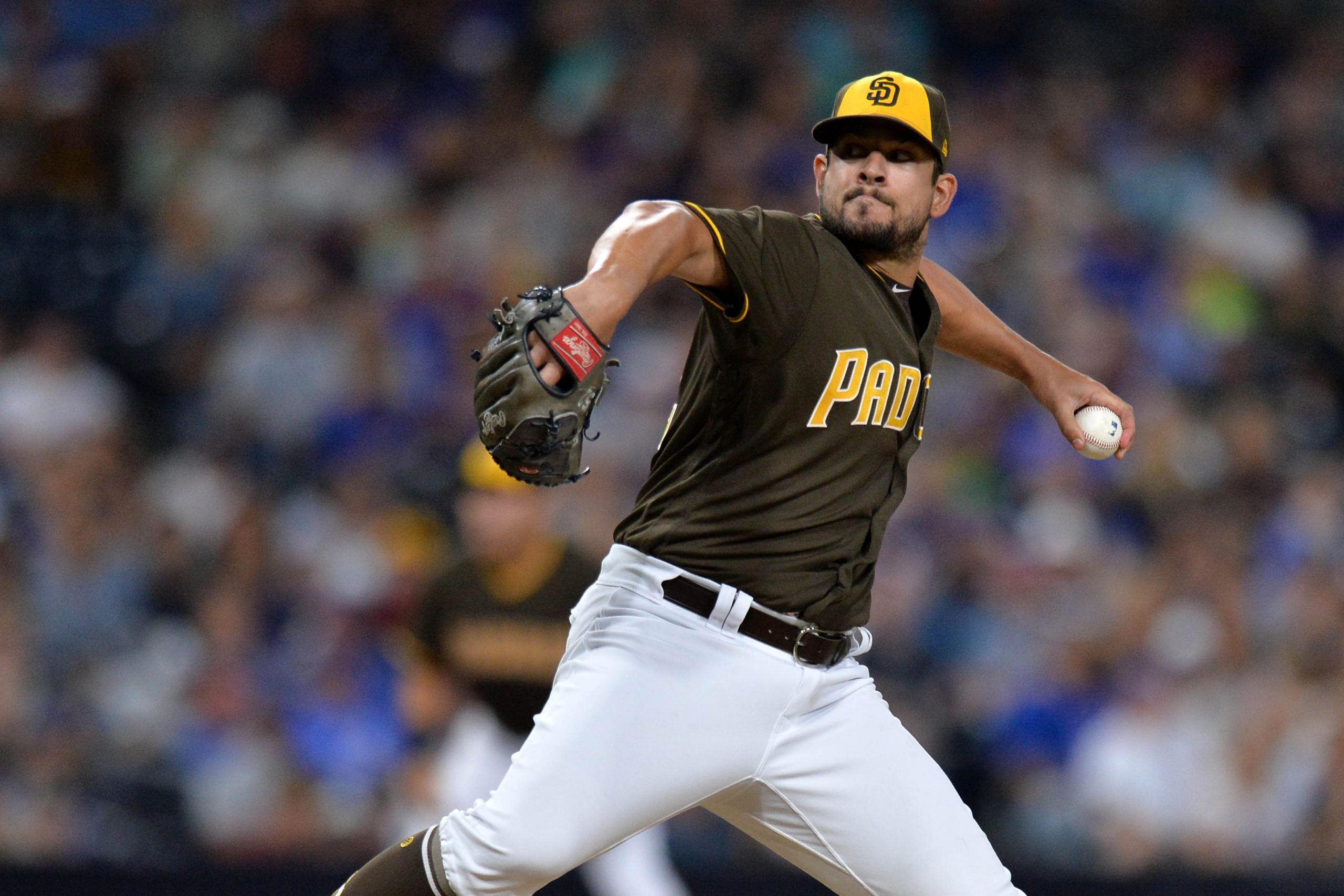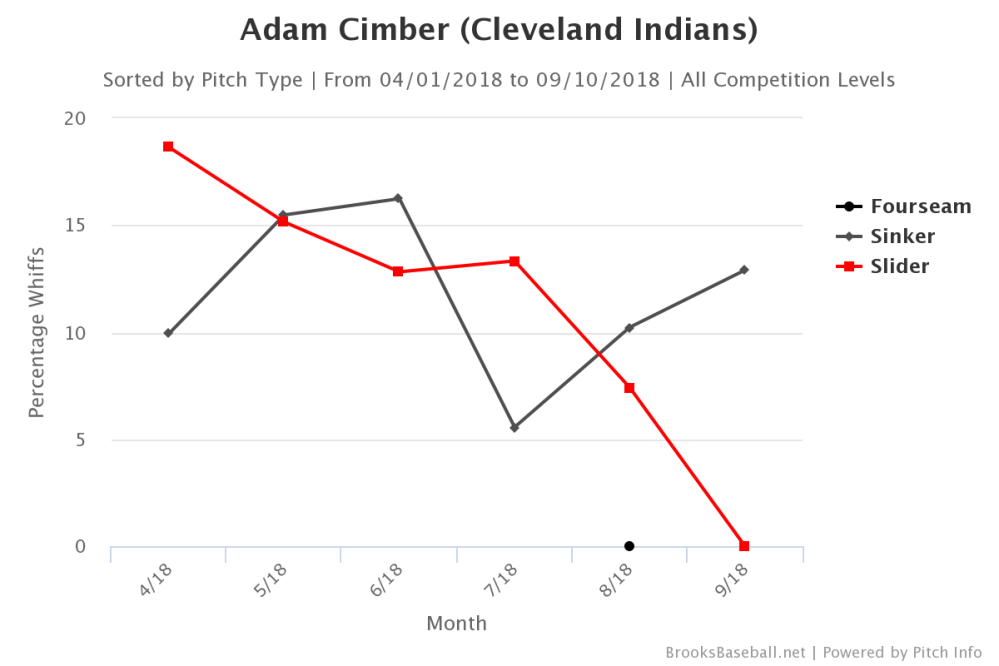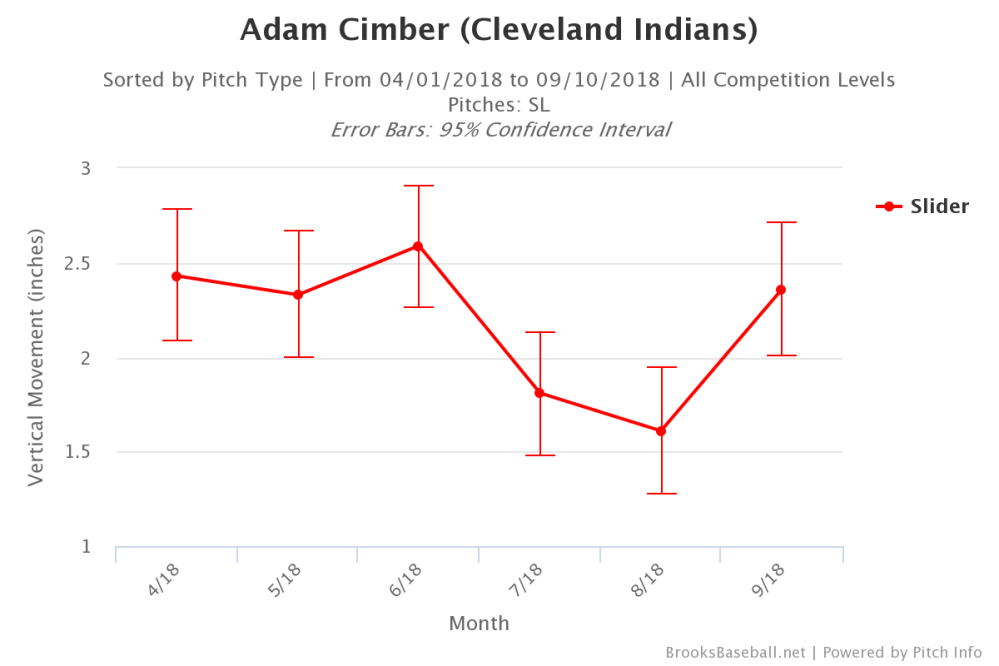As much as it hurt seeing Francisco Mejia going deep twice in his Padres debut, the July deal that sent him to San Diego was a necessary payment for the Indians to fix their bullpen problems.
At the time of the trade, it was at least a slight surprise that all it cost the Indians for Brad Hand and Adam Cimber was one future All-Star when a similar deal for Andrew Miller in 2016 cost them a top starter (Justus Sheffield), their top position player prospect (Clint Frazier) and two of their top relief prospects (J.P. Feyereisen and Ben Heller). Like Miller, Hand had been a top reliever for the previous two seasons and had multiple years of team control to come and Cimber was a bonus as a rookie with solid numbers in his first MLB season.
One of the reasons Hand may have come cheaper than expected is that his numbers with the Padres in the first half weren’t great. From 2016 through 2017 he had a 2.56 ERA, 1.03 WHIP, 11.5 K/9 and 4.5 WAR over 168.2 innings, but with San Diego in 2018 that ERA had risen to 3.05 and his WAR -0.1 despite a K/9 above 13. While his FIP of 3.18 was near his previous two seasons and would seem to state that his ERA wasn’t far from what it should be. However, his BB/9, H/9, HR/9 and K/9 rates were almost identical to that of his previous season and near equal to each year since his first in San Diego in 2016.
Those numbers have stayed steady with Cleveland with a 3.0 BB/9, 6.1 H/9, 0.9 HR/9 and 13.9 K/9 in his first 20.2 innings (all stats through 9/9), but instead of an ERA over 3.00, it has been under 2.00 and excluding his first appearance, he has had a 1.37 ERA, .183 average against [.308 BABIP], with 31 strike outs and 7 walks in 19.2 innings. In addition to this, he seems to be getting even better. From August 28th through September 10th, he struck out batters for all but three outs recorded, allowing just four hits, two walks and two runs across six appearances.
As for Cimber, things have flipped. After holding a 3.17 emboldened by a 2.33 FIP with San Diego, he has seen his strike out rate disappear as he went from 9.5 per nine to 2.5. He was never an elite strike out pitcher in the minors, but still averaged 6.2 throughout his MiLB career and 7.3 last year between AA and AAA. His 9.5 with the Padres may have been higher than expected, but the 2.5 now is much lower. Essentially, Cimber has been the exact opposite of Hand.
The following charts show the swing and miss rate for both Hand and Cimber month by month in 2018 from BrooksBaseball.net (the trade was made on July 19th).

This certainly seems a tale of two sliders as Cimber’s has continually been less useful while Hand’s has been getting more efficient (as well as his fastball). Looking deeper into Cimber’s, the only significant change I could find in movement and speed was the horizontal drop as there was almost a full inch difference between his first three months compared to July and August, his first two months in Cleveland.
What’s surprising based on this is that, while he has been more effective overall in September, allowing just four hits and one run (a solo home run) in his first 3.2 innings, he hasn’t been striking out more batters. In fact, he has struck out just one and walked none.
This lack of strike outs and walks has defined Cimber’s short time with the Indians as he has allowed more than one walk just once, in the worst appearance of his young career. On August third, he walked three and allowed three hits on the way to three runs scored in a game the Indians would ultimately lose by three. That game was certainly an outliar and if you remove it, Cimber has walked one batter in 12.2 innings, allowing four runs and striking out just three.
Ultimately, he has had great control and been pretty lucky to avoid hits in key positions, but it seems obvious why the Padres were willing to include him as a throw in player. He can be successful even without the strike out, but the chances of this lasting long term aren’t good.
Hand’s success, however, seems much more supported. While his recent K streak may not continue, he has a significant track record in the majors with a K/9 above 11 and, although his walk rate isn’t ideal, he has made it work over the last three years, so there is no reason to believe it will stop working now. Assuming Andrew Miller is healthy now that he has returned, this gives Terry Francona two elite left handers in addition to Oliver Perez, who has been surprisingly efficient this season.
As things stand, it appears all three could be on the Indians play-off roster, giving the bullpen a very different look than years past. If Trevor Bauer is able to rejoin the rotation before then, you could also see Shane Bieber join the pen and Cimber could see a reduced workload, limited to low-leverage innings. It is still possible that Cimber can return to normal and increase that strike out rate to around six per nine, but in the current era of the strike out, even that wouldn’t be very comforting against the best teams in the American League.
Add The Sports Daily to your Google News Feed!


